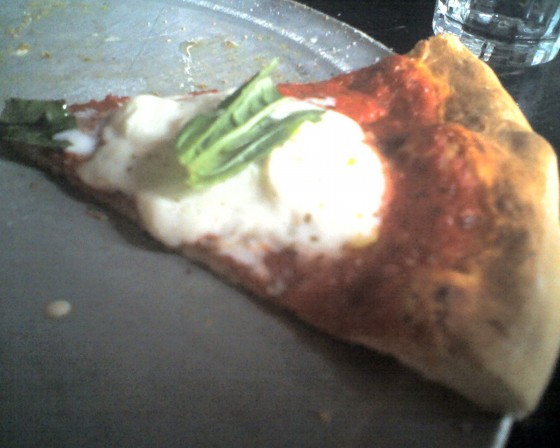Whenever I’m with new people at Beretta and I order the margherita with burrata, I find myself having to explain burrata. I do okay, but not as good as the Cheesemonger:
Burrata means “buttered” in Italian. It’s that rich. What it really is, though, is fresh cheese at its best. At first glance, burrata resembles a ball of mozzarella. But upon further scrutiny, it’s clear that this round of cheese is softer, and indeed, when cut, has an interior that spills out, revealing soft, stringy curd and fresh cream. If you’re a lover of mozzarella, ricotta, or really anything that’s straight-up creamy, this cheese is so what you want.
Let’s get one thing clear: Burrata is not mozzarella. And burrata is not buffala mozzarella, although it’s made from buffalo milk. Burrata is its own thing entirely, and you’ll know this the second you taste it. Perhaps some of the confusion has come from its tradition, which tells of a cheesemaking process that was born from another: burrata was made in order to rescue the little scraps of mozzarella di bufala that were leftover in the cheesemaking vat.
And there’s lots more to it too. Read on.
(Thanks, Brittney!)
